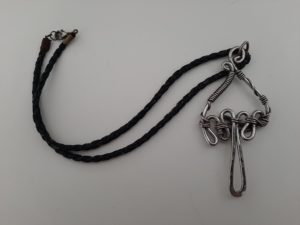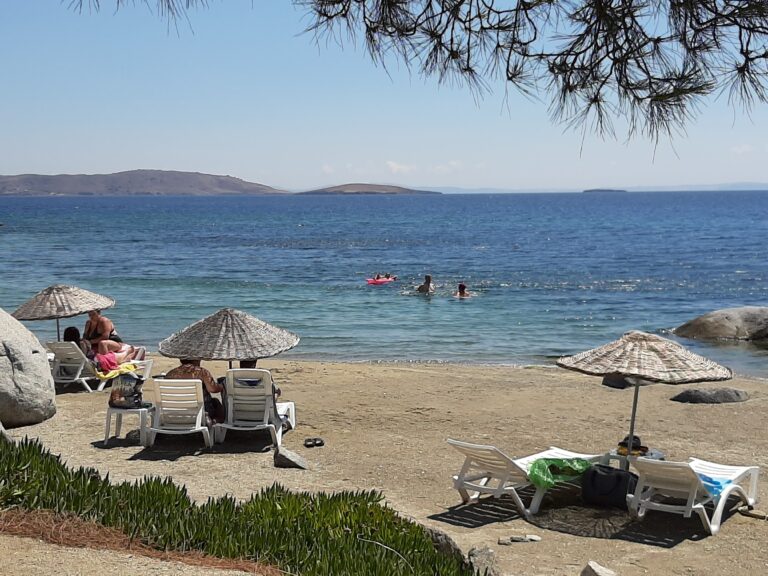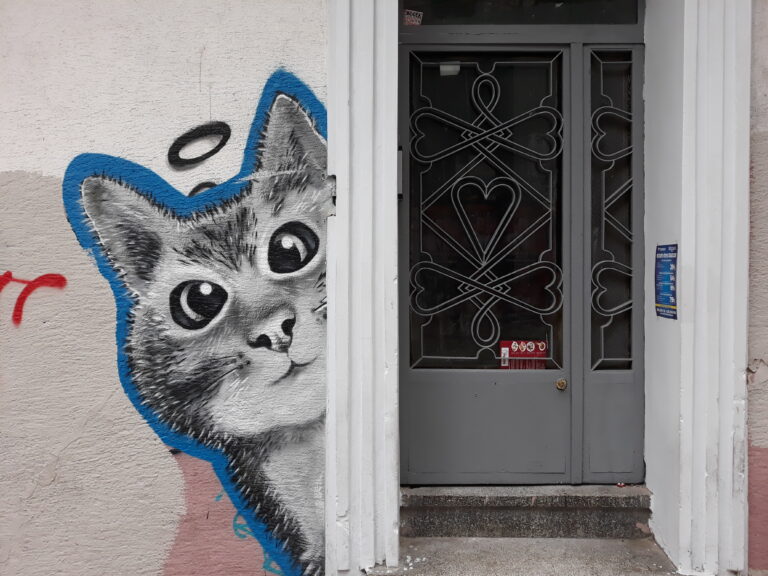Buyuk Valide Han adventure
Some of my best days in Istanbul aren’t when I visit a famous tourist site but when I’m out and about trying to get things repaired. Like the time I had to find someone to reattach the handle of our cezve (Turkish coffee pot). My husband Kim has the habit of banging pots on the edge of the sink to get the water out and one day he was a bit too enthusiastic and the handle came off. It sat in the cupboard for months as I tried and failed to find the appropriate ‘little man’ to help. No matter where I live in Turkey I amass assorted bootmakers, tailors, and fixers of the odd and the strange. I call them my ‘little men’ for reasons best understood in my story “Lisa’s Little Men” in Exploring Turkish Landscapes: Crossing Inner Boundaries.
Part of the delay was normal life stuff getting in the way, you know, writing, shopping, cooking, meeting friends. It was also because I’ve always been a very shy person (a fact that will likely come as a surprise to many people) and find it stressful talking to people I don’t know. Small talk and I are not well-acquainted but teaching English to foreign students helped a lot with that. Asking basic questions like “Where are you from? and What is your job” goes a long way towards starting a conversation.
Even now the thought of problem-solving in my imperfect Turkish can be daunting so I put things off. Back then I had even less Turkish but one day I finally went over to Eminonu, coffee pot, handle and a list of useful Turkish words on a piece of paper in my bag. Words like kulp (handle), broke off (ayrıldı) and reconnect (yeniden bağlanmak). After asking at several places and following lots of different instructions I found myself standing outside a small shop with a large glass window and nothing inside except for a huge machine consisting of a small metal traylike shelf and a moveable arm suspended above it. Three men were standing around it, completely oblivious to me and the rest of the outside world, until I opened the door. They quickly understood what I was after and within seconds the handle was reattached.
When the pieces of our much loved potato peeler refused to stay together anymore I put them in the intray on my desk with the plan to get it fixed at the same place. They joined a worked wire pendant a friend had made and given me for my 30th birthday. The lovely shininess had long been replaced with grime and I no longer wore it.
Last week I finally made time to go to Eminonu again before heading up to Sariyer by ferry for an appointment, but after walking the length and breadth of Hasırcılar Sokak and in and out of every side street I learned that although you can still buy copper, tin and other metal products, the repair shop isn’t there anymore.
Seeing me walk past his shop for a second time, a friendly man asked if he could help. I explained what I wanted and I mimed reconnecting the potato peeler bits and showed him the note I’d writtenabout the necklace. “Bakırın yeni tenekelenmesi gerekiyor”, which means something along the lines of ‘it’s necessary to re-tin the copper’. I wasn’t sure the necklace was copper but it was the closest I could get. After looking at the pendant he took me through all the plated items in his shop and we established I needed a nikelajci, a man who could coat the wire in nickel, bringing it back to its original brilliance. Then he told me the repair men had long moved to Buyuk Valide Han up on one of the streets on the slopes surrounding Süleymaniye Camii.
He told me how to get there but the details and instructions were really complicated and overwhelming. I need maps and pictures not words and explanations. Seeing my confusion he wrote down the name and phone number of a nikelajci, a nickelsmith, along with a note, “Bu malzemeyi nikel kaplama yapılmasını istiyor” (She wants this item to be nickel plated). I thanked him and headed to the waterfront planning to catch my ferry but realised I still had an hour and a half up my sleeve. I didn’t feel like going off in pursuit of photo opportunities (it was too hot) so decided to see if I could find Ismet Bey, the nikelajci in question. First of all I had to call him, and speaking on the phone, especially to random couriers and tradesmen, is hard work. Often they have thick accents and speak very fast so I have a lot of trouble understanding them. I looked around for someone to ask and spotted a cluster of zabita (the market police who check vendors and tradespeople to make sure they aren’t breaching any trading laws, blocking pavements with displays and so on) and decided to ask one of them to help me.
The man I asked looked surprised at my request but he rang the number on the paper nonetheless. Identifying himself as a zabita in Eminonu (and thereby possibly freaking Nikelajci Ismet out because zabita are often associated with issuing fines) he told him he had a bayan, a lady, standing next to him who wanted to know where his workshop was. Lots of information followed. Hanging up the zabita repeated what he’d been told. All I really understood was I had to head up to Mercan Yokuşu and then turn right and somewhere left and would see Buyuk Valide Han (where Nikelajci Ismet worked), “Süleymaniye Camii yanında”, next to the mosque, but after that my comprehension petered out. I wasn’t too fazed though. I’ve long known to always ask three people for directions wherever I am in Turkey if I want any chance of arriving at the correct destination.
I thanked him and headed off. I found Mercan Yokuşu easily enough and checked with a shopkeeper about the correct street on right to take next. Then I spent the next 30 minutes turning left at the second street only to find no fourth street on the right where the third person I asked told me I’d find Buyuk Valide Han. I’m nothing if not persistent but it was a steamy 30 degrees Celsius and even my good humour borne of the excitement of the chase was running out. Eventually I found myself looking down another narrow street, this one just down from the retaining wall of Süleymaniye Camii where there was definitely nothing fitting the last description I’d been given. Seeing me, two men eating at a nohutlu pilav lokanta (chickpea rice restaurant) waved me over and asked how they could help. The cook came out too and insisted I sit down, then offered me a tea. I pulled out my now somewhat worn piece of paper and he promptly rang Ismet Usta (Master Ismet). The cook said he had a kadın, a woman standing next to him who was looking for his workshop. After explaining where we were, asking more questions and listening carefully he finally said thank you and hung up. Apparently I was to walk down, and down some more, and then I’d see the han on the left.
The usta of Buyuk Valide Han
He was right. I walked through a grand entryway with the words Buyuk Valide Han affixed to a high archway, past grime covered sandstone ceilings and windows protected by metal bars fashioned as curlicues, out into a large open square. Delivery trucks and cars were parked haphazardly around a central mosque, and workshops, cafes, wholesalers and depots were housed in shops of assorted sizes. All of them were numbered so I asked for directions (again) to number 32.
It turned out to be a small room full of vats of liquid smelling strongly of chemicals, hidden behind the mosque, where a stand of trees created a blissfully cooling breeze. At the high counter a young apprentice eyed me curiously when I identified myself as the woman people had been calling about, and asked for Ismet Usta. When Ismet appeared I showed him the potato peeler and pendant. He took the pendant and assured me he could do the work and told me not to worry when I asked the price. After all, given all the trouble I’d been through to find him I wasn’t going to suddenly decide not to have the work done. Figuring it couldn’t be too expensive, I accepted his invitation to sit down in the shade with him and his friends and have a tea.
Ismet consulted with Imdat, Mehmet and Veccedin about the repair to the potato peeler and they all wanted to know why I wanted it fixed when I could easily buy a new one. When I explained the shape better suited my hand now I have arthritis in my thumb joints (just like my nana did) they all nodded sagely. Ismet took the peeler to a workshop on the other side of the square and then returned just as the tea arrived. Suddenly I was struck by shyness and also aware of the fact I was the only woman in the place, and a yabancı, a foreigner at that, sitting in a square somewhere in Istanbul, drinking tea with four men I didn’t know.
I needn’t have worried. They were all very nice and respectful, and eager to chat. Our conversation ranged from the ways Eminönü had changed from being a local area full of tradesmen to a more tourist centre, the different nationalities of tourists coming to Turkey now and their diverse behaviours, how displaced people and economic migrants have entered the workforce and the ways this impacts on Turkish tradesmen and what I think of Islam. I drank a glass of the nicest, cleanest tasting Turkish tea I’ve had in a long time and would have accepted a second except I doubted there was a toilet anyone would be prepared to let me use.
Eventually Ismet got up to check on the work and returned with my as new potato peeler and pendant. The latter looked glorious and all the men took turns to admire it, especially after Ismet told them it had been hand-beaten and wasn’t just made up of twisted wire. I was thrilled with the results and asked the price. “Bu ben’den bir hediye”, Ismet said, a gift from me. I rejected the offer three times as is custom, and accepted gracefully when he insisted.
I could have sat in the square chatting and enjoying the company and cool breezes forever, but I had another engagement I couldn’t miss. After a quick tour of the workshop, I said my goodbyes and headed down to the waterfront, only a few hundred metres away. After all the walking I’d done to get there the quick exit felt like a reward, as had the whole experience. It was a wonderful reminder of all that I love about Turkey and her people.
******************
Find out more about my ultimate move to Istanbul in my memoir Waiting for the Tulips to Bloom: Adrift in Istanbul. Making the decision to come was easy. It’s choosing to stay that can be hard.











Really enjoyed reading this, I felt like I was with you all the way, especially the past about asking directions! I didn’t know it was custom to refuse a gift offer three times, so that may be useful.
Thanks
Thank you for letting me know you enjoyed this piece. I had fun going there and then writing about it. The three times refusal is an old tradition I always stick to, just in case. I’d hate to walk off with someone’s much loved belonging!
Love this story! It reminds me of the time I used to live in Fener, and my boyfriend (now husband) and I used to walk along and explore the backstreets of Eminönü, getting lost in it all. I appreciate your determination and it paid off.
Yes, getting lost is often the best way to discover what makes Istanbul tick – it’s people! Thank you for your feedback.